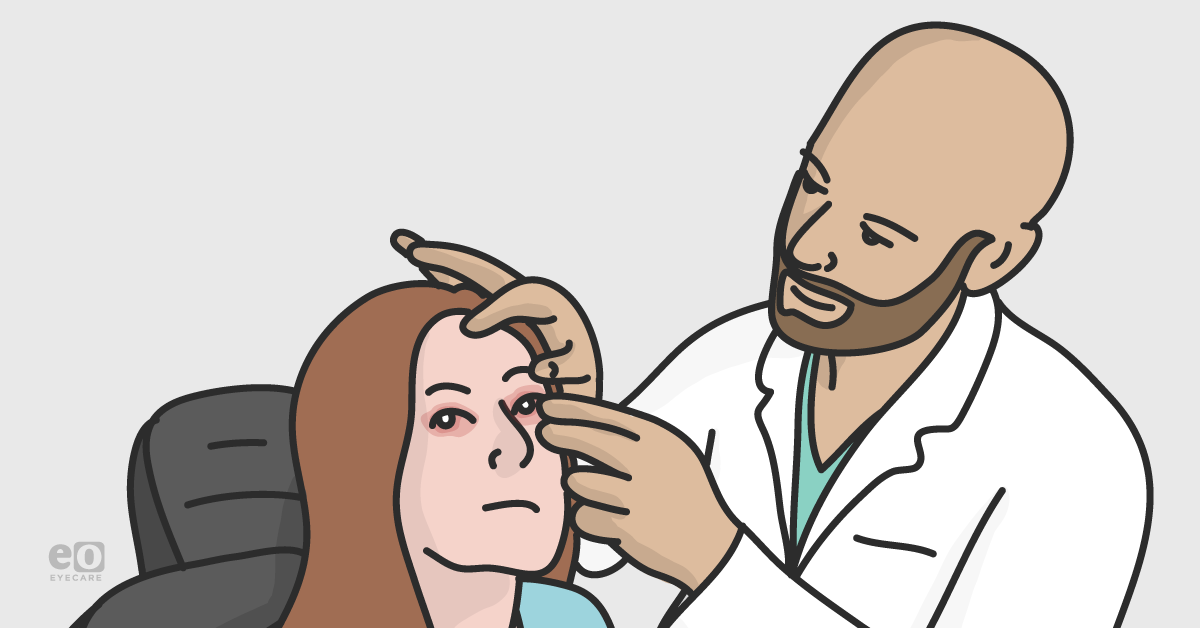A patient presents complaining of light sensitivity, redness, and pain in her left eye. She reports that it started after she was putting on her makeup in the bathroom of her home and hitting her eye with her mascara wand this morning.
The clinical care for a patient with a corneal abrasion may likely include a
prescription medication and a bandage contact lens. Most patients will likely follow a specific clinical course and the coding for this patient should also follow a specific few rules.
Understand your corneal abrasion ICD-10 codes.
In 2015, ICD-10 allowed us to describe corneal abrasions with more specificity than prior iterations of ICD. This means that we can provide payers and health data registries with better and more complete information related to managed conditions and outcomes.
The challenge with the ability to increase the detail that we get when we describe a corneal abrasion with ICD-10, is that it can increase the complexity of our coding.
Let’s make this less complex by breaking down the corneal abrasion ICD-10 codes.
Keeping it simple is typically best.
The general ICD-10 code to describe the initial evaluation of a patient with a corneal abrasion using ICD-10 is:
- S05.02XA – Injury of conjunctiva and corneal abrasion without foreign body, left eye, initial encounter
The sixth digit of this code “A” denotes the initial encounter for a patient with a corneal abrasion.
It is important to note that most payers will accept the general ICD-10 code of S05.01XA to pay a claim for a corneal abrasion.
If this were a subsequent encounter you would replace the “A” with a “D” and the code would be:
- S05.02XD – Injury of conjunctiva and corneal abrasion without foreign body, left eye, subsequent encounter
Adding specificity to the corneal abrasion ICD-10 code can describe things better.
If we were going to tell the story more completely to the payer, we would add the following description codes to the S05.02XA:
- Y92.012 - Bathroom of single-family (private) house as the place of occurrence of the external cause
- W27.8XXA - Contact with other nonpowered hand tool, initial encounter
Choose the correct CPT code to assign your value appropriately.
With the understanding of how to use ICD-10 to describe the corneal abrasion behind you, don’t forget to correctly apply CPT to describe the level of service that you provided for the patient.
Choose the codes that best describe your care.
We are fortunate to be able to utilize two code sets to tell a payer what we did for a patient when we cared for them. The complete details of the
coding guidelines are beyond the scope of this article, but we can discuss the most likely levels of care based on the required medical decision making (MDM) for a patient with a corneal abrasion.
For starters you will likely have the option to choose a 920X2 based on the American Optometric Association’s Clinical Practice Guidelines
Care of a Patient with Ocular Surface Disorders. Understanding these guidelines will also allow you to assign the appropriate 992XX code as well.
Understanding your 992XX choice is important when describing the care you provided to a patient with a corneal abrasion.
When we think about using the 992XX code set to describe this encounter, the
2021 AMA coding guidelines will allow us to break this visit down and code solely using MDM. Without getting into all of the
fine details of utilizing 99 codes and 92 codes, we would likely achieve a 992X3 or possibly a 992X4 depending on additional potential problems and risk of treatments.
Don’t forget about the bandage contact lens.
If it is appropriate to utilize a bandage contact lens (BCL) for this patient then be sure to bill for that. In this case it will also be advantageous to indicate which eye you placed the BCL so that it is consistent with the eye indicated in the corneal abrasion ICD-10 code. So in this case you would use:
- 92071-LT - Fitting of contact lens for treatment of ocular surface disease
The bottom line for corneal abrasion coding is keep it simple.
The coding and billing for patients with corneal abrasions does not need to be complicated. Determine the general ICD-10 code (S05.02XA) and any additional description codes (Y92.012, W27.8XXA) that are appropriate. Describe the level of care you provided to the patient with the appropriate office visit code (920X2/992XX).
Eyes On Eyecare has partnered with EyeCode Education to bring our members the best in coding and billing education!
